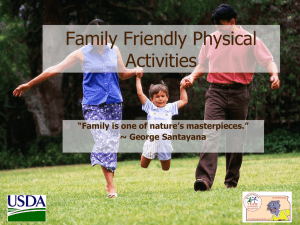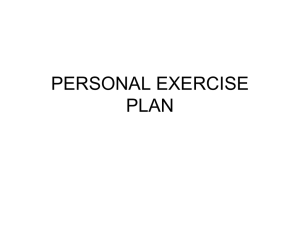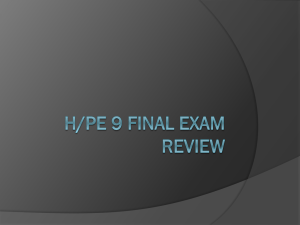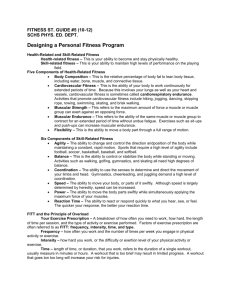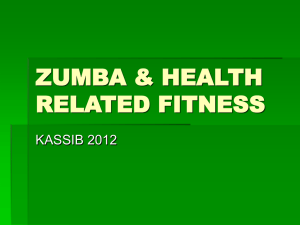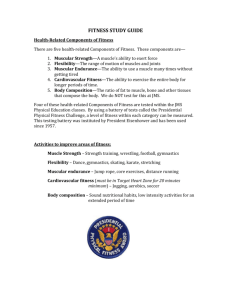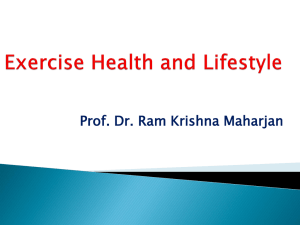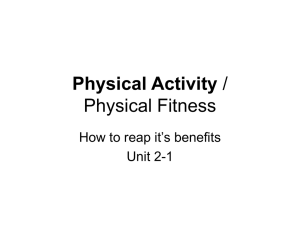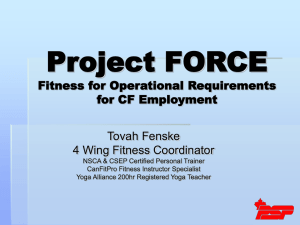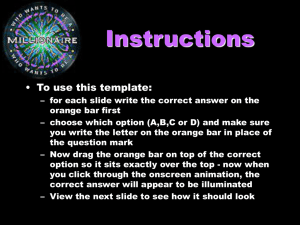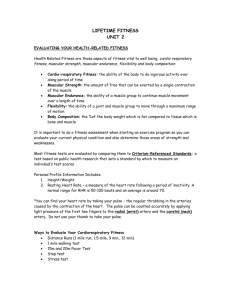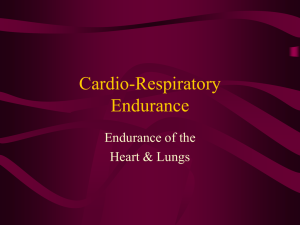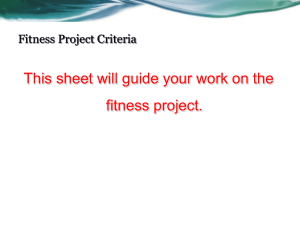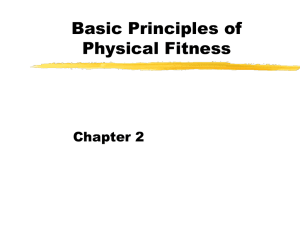Physical Activity and Fitness
advertisement
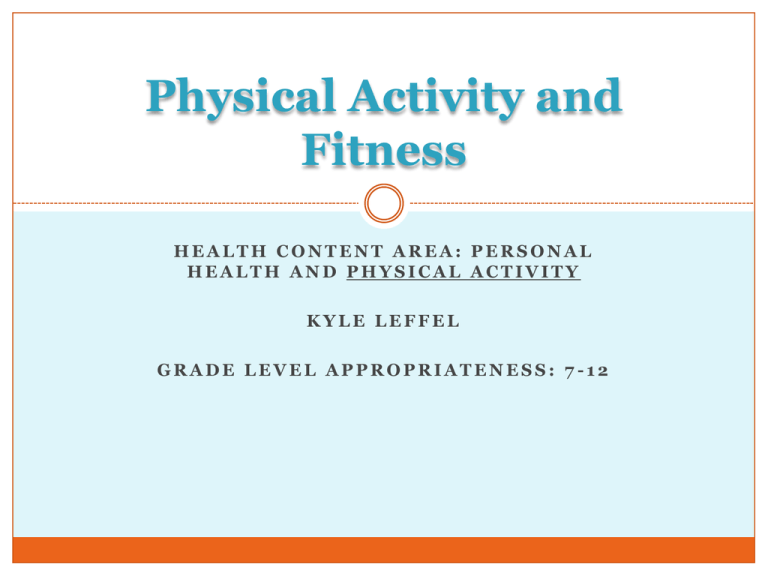
Physical Activity and Fitness HEALTH CONTENT AREA: PERSONAL HEALTH AND PHYSICAL ACTIVITY KYLE LEFFEL GRADE LEVEL APPROPRIATENESS: 7-12 Objectives Define Physical Activity and Physical Fitness Name 5 benefits of being regularly physically active. Identify and describe the health and skill related components of physical fitness. Describe the FITT Principle Objectives Define Exercise Identify and describe the different types of exercise: Aerobic, Anaerobic, Isometric, Isotonic, and Isokinetic. Describe warm-up and cool-down. Know the 6 Training Principles Identify at least 5 lifetime sports and physical activities. Define Physical Activity Physical Activity is any bodily movement produced by skeletal muscles that results in energy expenditure. Any form of muscle movement. What is Regular Physical Activity? Define Physical Fitness Physical Fitness is “a dynamic state of energy and vitality that enables one to carry out daily tasks, to engage in active leisure-time pursuits, and to meet unforeseen emergencies without undue fatigue…” Physical Fitness is “the ability to perform physical activity and to meet the demands of daily living while being energetic and alert.” Physical Fitness is a set of attributes that people have or achieve, which relates to the ability to perform activity. Health Related Physical Fitness Components Cardiorespiratory Endurance The ability of the circulatory and respiratory systems to supply oxygen during sustained physical activity. Muscular Strength The maximum amount of force a muscle can produce in a single effort. Muscular Endurance The ability of the muscle to continue to perform without fatigue. Flexibility The ability to bend and move the joints through the full range of motion Body Composition The ratio of lean tissue to fat tissue in the body. Skill Related Physical Fitness Components Agility The ability to rapidly change the position of the entire body in space, with speed and accuracy. Balance The maintenance of equilibrium while stationary or in motion. Coordination The ability to use the senses, such as sight and hearing, together with body parts, in performing motor tasks smoothly and accurately. Speed The ability to perform a movement within a short period of time. Power The rate at which a person can perform work (strength over time). Reaction Time The time elapsed between a stimulus and the beginning of the reaction to it. The FITT Principle Frequency The number of exercise sessions per week in an exercise program. Intensity The level of exertion during exercise. Time The duration of time in minutes that the proper intensity level should be maintained to develop the maximal oxygen uptake, also known as aerobic power. The maximal capacity for oxygen consumption by the body during maximal exertion. Type (mode) Activities that are selected on the basis of individual functional capacity, interests, time, availability, equipment and facilities, and personal goals/objectives. Define Exercise Exercise is not synonymous with physical activity. Exercise is a type of physical activity that is planned, structured, repetitive, and purposive, in the sense that improvement or maintenance of physical fitness is an objective. Exercise Principles Lifetime Activities Closure Use this knowledge to your advantage! Get out there, get in shape, and have confidence while doing it!






